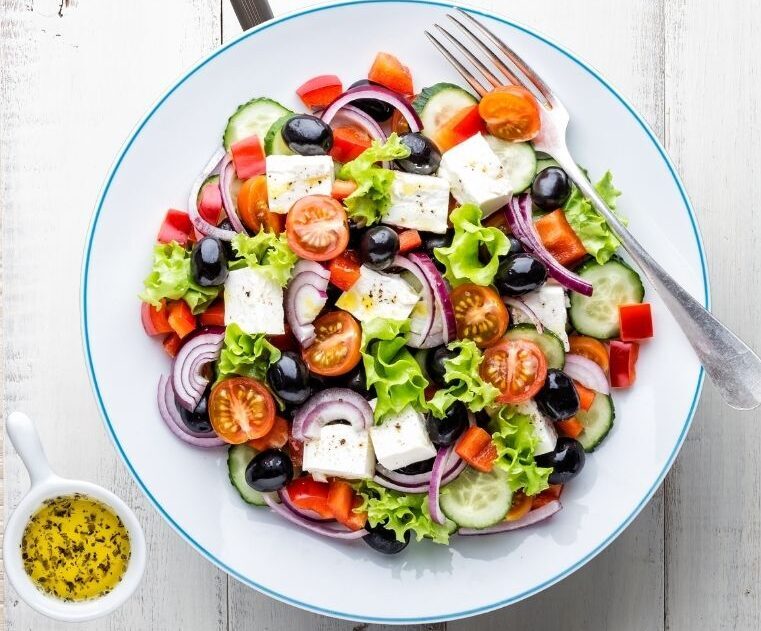Popular salad greens and lettuce for a healthiest salad
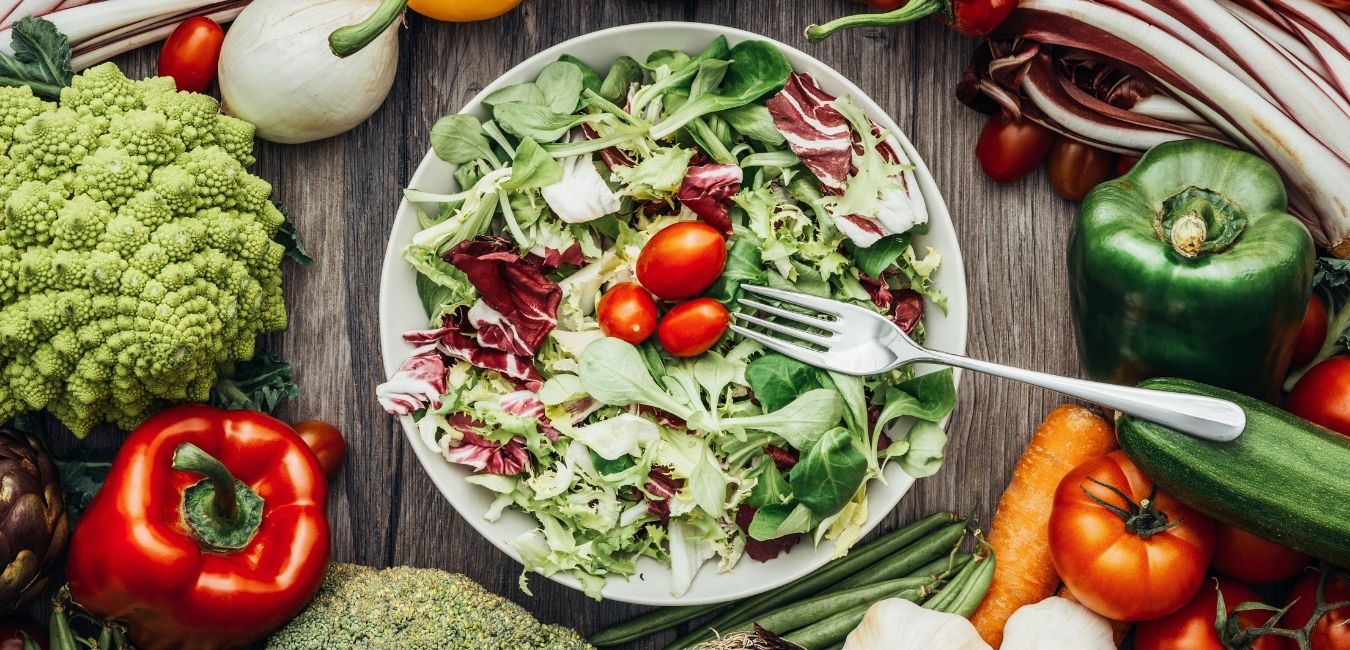
Preparing Greens for Salad
Even while fresh greens salads do not require cooking, they still need careful preparation. Start with high-quality ingredients: fresh young leaves are the least fibrous and have the most delicate flavor, but old, overgrown lettuces might have a rubbery taste.
Cutting the Salad Greens
If the leaves must be broken into smaller pieces, do so with the least amount of physical pressure possible, as this might crush cells and cause off-flavors and darkened patches to appear. Cutting with a sharp knife is usually the most efficient way; tearing by hand requires squeezing, which can damage tender leaves.
Clean the Salad Greens
To eliminate grit, soil, and other surface pollution, the greens should be thoroughly rinsed in many changes of water. Soaking them in ice water for a few minutes can replenish any water they’ve lost, leaving them fresh and crisp.
Dry the Salad Greens
To ensure that the dressing coats the leaves without being diluted, dry the greens as much as possible. Thicker dressing takes longer to run off the leaf surface than thin, runny dressings. Oil-based dressings, such as vinaigrettes, should be added last because oil immediately wets the waxy leaf cuticle and quickly darkens and soaked the leaf. If you have to prepare your salad ahead of time with dressings then water-based cream dressings are better.
The majority of salad greens used in popular salads are listed in the table below. The lists will come in handy when you’re coming up with your own salad ideas.
| Name | Description | Image |
|---|---|---|
| Iceberg lettuce | The most often used salad dressing ingredient. Crisp, mild-tasting pale green leaves form a firm, compact head. Its texture is valuable because it stays crisper for longer than other lettuces. It can be used alone, but because it lacks flavor, it's better paired with other flavorful greens like romaine. | 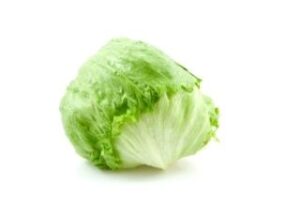 |
| Romain - Cos Lettuce | Dark green, coarse leaves and elongated, loosely packed head. It has sweet flavor and a crisp texture. It stores well and is easy to prepare. It's a must-have for a Caesar salad. The middle rib is frequently removed for nice presentation. | 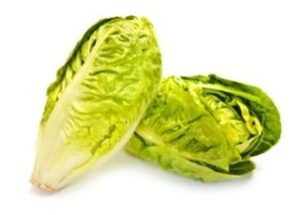 |
| Chinese Cabbage | Heads are elongated and light green, with thick white central ribs. There are two types of heads: celery cabbage, which has a narrow, elongated head, and napa cabbage, which has a thicker, blunt head. With a slight cabbage flavor, it's tender but crunchy. It adds great flavor to salads with mixed greens. Chinese cabbage is very often used in Chinese cuisine. | 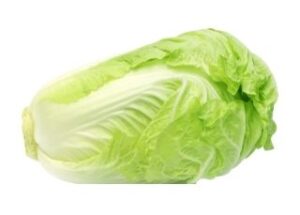 |
| Arugula | These pungent, uniquely flavored greens, sometimes known as rugula or rocket, are related to mustard and watercress. They're tender frequently sandy so it must be thoroughly cleansed before use. Arugula was originally almost solely associated with Italian cuisine, although it has subsequently become more widely available and popular. |  |
| Watercress | Watercress is typically used as a garnish, but it's also delicious in salads. The leaves are small, dark green, oval, and have a spicy, peppery flavor. Remove thick stems before adding to salads. | 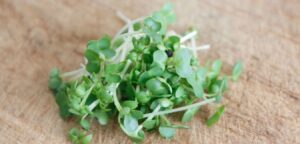 |
| Spinach | Small, soft spinach leaves make great salad greens either used alone or in combination with other greens. Spinach leaves with sliced raw mushrooms and crisp, crumbled bacon are a classic salad garnish. Spinach must be carefully washed and the coarse stalks removed. | 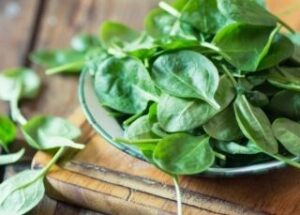 |
| Belgian Endive or Witloof Chicory | It is 4 to 6 inches long, narrow, loosely packed, pointy heads. The color ranges from pale yellow-green to white. Crisp leaves have a waxy texture and bitter flavor. Frequently served alone, cut in half or wedges, or separated into leaves, with a mustard vinaigrette dressing. | 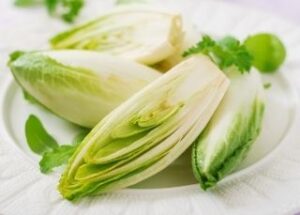 |
| Fraisee | The plant frisée is similar to curly endive or chicory, but it is grown in a way that makes it more tender and less bitter. The leaves are pale yellow, thin, and fluffy, with a distinct but moderate flavor, except for the outer layer. | 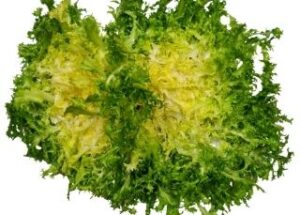 |
| Curly Endive or Chicory | The leaves are narrow, curled, and twisted, with a firm texture and a bitter flavor. The leaves are dark green on the outside and yellow or white on the inside. When blended with other greens or used as a base for garnish, it's pretty, but it's a little bitter on its own. | 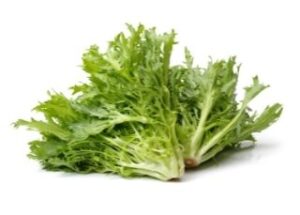 |
| Loose leaf lettuce | Instead of heads, it forms bunches. Leaves are soft and fragile, with curling edges. It's possible that they're all red. It wilts quickly and doesn't keep well, but it's cheap and adds diversity and interest to mixed green salads. | 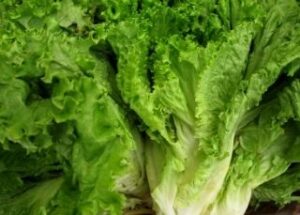 |
| Bibb or limestone lettuce | It is similar to Boston lettuce, but smaller and more fragile. A entire head could be a few inches (less than ten centimeters) across. Outside, it's dark green, but inside, it's cream yellow. Its delicacy. In some markets, the delicate flavor and premium price make it a luxury item. The little, entire lcaves are frequently served as an after-dinner salad with a mild vinaigrette dressing. | 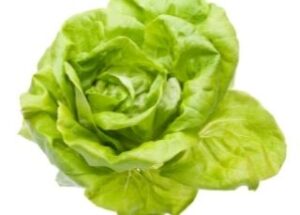 |
| mesclun | Baby lettuces in a variety of soft textures. Although it is available as a mix, some people prefer to use individual baby lettuces and make their own blend. | 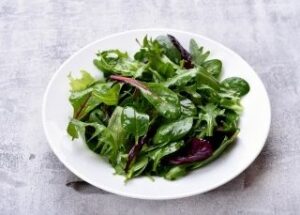 |
| Baby lettuces | The delicate, tiny leaves that results in Separate mesclun mixes are available. These include the following: Bibb lettuce (both red and green), romaine lettuce, and baby red oak & lola rossa (a red lettuce with a mild flavor) | 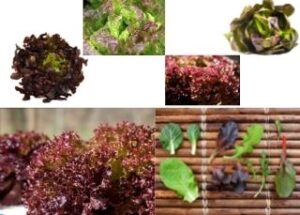 |
| Sprouts | Sprouts are young plants that have just sprouted from their seeds and have yet to produce their true leaves. Mung bean sprouts are extensively utilized in Chinese cuisine. Alfalfa sprouts have a mild flavor and are frequently used in delicate salads. The flavor of radish and mustard sprouts is peppery. | 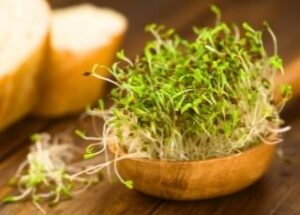 |
| Microgreens | After a seed sprouts, these are the first true leaves to develop. | 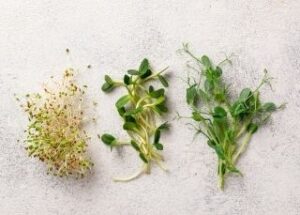 |
| Radicchio | Radicchio (ra dik ee oh) is a red-leafed Italian chicory with creamy white ribs or veins and small, round heads. It has a slightly bitter taste and a crunchy texture. Although radicchio is costly, only a few leaves are required to give color and taste to a salad. | 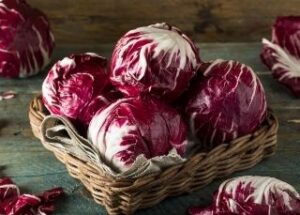 |
| Mache | Mache is tender green with spoon shaped leaves, and small. It has a nutty flavour to it. It is also known as lamb's lettuce, lamb's tounge, field salad, or corn salad. | 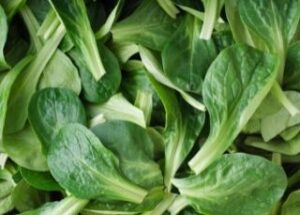 |
| Mizuna | Mizuna is also called Japanese mustard greens. It has dark green leaves and mild mustard like taste. Leaves are similar to dandelion leaves with jagged edges. | 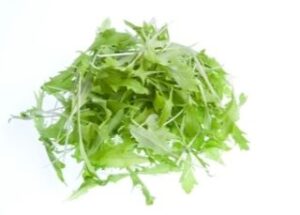 |
| Tatsoi | Ttsoi is a tiny, dark green leaf with a round shape. It has a flavor that is comparable to arugula, mustard greens, watercress, and other mustard family. It is sometimes used in mesclun salads, even though it is not a lettuce. | 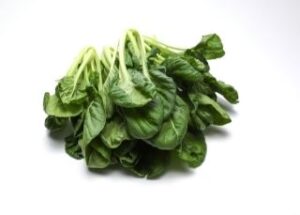 |
Iceberg Lettuce, Spinach, Chinese Cabbage or celery cabbage, Belgian endive, Bibb or limestone lettuce, Romain lettuce, Boston lettuce, Loose-leaf Lettuce, Escarole, Chicory or curly endive, Frisee, Watercress, Dandelion greens, Arugula, Radicchio, Mesclun, Tatsoi, Mache, Microgreens, Sprouts, Edible flowers.
Avacado, Bean sprouts, Broccoli, Carrots, Cabbage (white, green and red), Cauliflower, Celery, Celeriac (celery root), Cucumbers, Sunchokes (Jerusalem artichokes), Kohlrabi, Mushrooms, Onions and scallions, Peppers (red, green and yellow), Radishes and Tomatoes.
Asparagus, Artichoke hearts, Beans, Hearts of palm, Leeks, Olives, Beets, Carrots, Cauliflower, Corn, Pickled Cucumbers (dill, sweet etc), Peas, Roasted and pickled Peppers, Pimientos, Potatoes, Water chestnuts.

